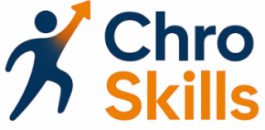
The Role of Emotional Intelligence in HR Leadership
Emotional Intelligence: A Keystone in HR Leadership
In the rapidly evolving educational sector, the role of emotional intelligence in HR leadership cannot be overstated. Understanding and managing one's emotions, while recognizing and influencing the emotions of others, significantly impacts the successful management of projects within educational institutions. HR leaders equipped with this skill are more adept at creating a supportive and productive environment, paving the way for effective project progress. Balancing various tasks, managing teams, and aligning them with long-term educational goals require a keen sense of empathy and emotional awareness. For HR leaders in educational settings, being emotionally intelligent helps in fostering positive relationships among team members, which is crucial for successful project management and goal attainment. Whether planning a new educational project or working through the challenges of an existing one, the ability to understand and manage emotions is indispensable. Moreover, emotional intelligence aids in effective time management. By anticipating the needs and emotions of team members, HR leaders can streamline workflows, allocate resources efficiently, and ensure that project tasks are completed on time. This becomes especially important when managing multiple projects or when guiding students in their educational learning projects. Emotional intelligence is not just about understanding others’ emotions; it is also about self-regulation. For HR leaders, being able to manage their stress and emotions helps them make sound decisions, even under pressure. This emotional stability can cascade throughout the team, leading to a more harmonious and efficient working environment for everyone involved. For those seeking to hone their emotional intelligence skills further, tools such as the enhancing task analysis in HR leadership can provide valuable insights into improving emotional intelligence and its application in diverse educational settings. With the right approach, HR leaders can transform emotional intelligence into a powerful asset, resonating through every successful project they undertake.Strategic Thinking and Decision-Making Skills
Strategic Vision in HR Leadership
In the dynamic world of human resources, strategic thinking is not just a skill but a necessity. For chief human resources officers (CHROs), the ability to think strategically can significantly impact the success of educational projects and the overall management system within educational institutions. Strategic thinking involves setting long-term goals and creating actionable plans to achieve them. This is crucial in the educational sector, where projects often require careful planning and execution to align with institutional objectives.
CHROs must be adept at decision-making, a process that involves evaluating various options and selecting the best course of action. This skill is particularly important in the context of project management, where decisions can affect the progress and success of educational projects. Effective decision-making requires a deep understanding of the educational environment, the ability to anticipate future challenges, and the capacity to adapt to changing circumstances.
Integrating Strategic Tools and Techniques
To enhance their strategic thinking and decision-making capabilities, CHROs can utilize a range of tools and techniques. These may include SWOT analysis, which helps in identifying strengths, weaknesses, opportunities, and threats, and scenario planning, which prepares leaders for various potential futures. Such tools not only aid in the planning process but also in managing resources efficiently, ensuring that projects are completed on time and within budget.
Incorporating these strategies into their daily tasks allows CHROs to lead with confidence and clarity. By fostering a culture of strategic thinking within their teams, they help team members develop their own management skills, ultimately contributing to the successful project outcomes. For more insights on mastering adaptability and flexibility in HR leadership, visit this resource.
Collaborative Decision-Making
Another essential aspect of strategic thinking in HR leadership is collaborative decision-making. Involving team members in the decision-making process not only enhances the quality of decisions but also fosters a sense of ownership and commitment among team members. This collaborative approach is particularly beneficial in educational institutions, where diverse perspectives can lead to innovative solutions and improved project outcomes.
By integrating strategic thinking and decision-making into their leadership style, CHROs can effectively navigate the complexities of the educational sector. This approach not only supports the achievement of organizational goals but also enhances the learning experience for students, preparing them for future challenges in their educational journey.
Communication Skills: The Backbone of HR Leadership
Building Strong Communication Channels in the Educational Environment
Communication skills hold immense power and are undeniably the backbone of effective HR leadership. At the core of educational project management lies the need for clear, consistent, and open lines of communication between diverse team members, educators, and stakeholders. This is essential for aligning on the project's vision and ensuring successful outcomes. An HR leader must be skilled in both verbal and non-verbal communication, tailoring messages according to the audience—whether addressing students, faculty, or administrative staff. Comprehending different communication styles facilitates an inclusive environment where ideas can be freely exchanged, fostering innovation and improving project progress.To bring clarity and cohesion in project environments within educational institutions, consider these elements:
- Active Listening: HR leaders must engage in active listening to understand the concerns and inputs of students and team members. This helps in anticipating potential hurdles in the project management process.
- Open Forums: Establishing open forums or regular meetings to discuss project tasks encourages transparency. It allows team members to voice their opinions and ensures everyone is aligned on project goals.
- Clear Documentation: Developing clear, accessible documentation helps streamline project management, ensuring all parties are aware of timelines, tasks, and educational systems in place.
- Conflict Resolution: Conflict is inevitable in a dynamic school project. HR leaders must be adept in conflict resolution, facilitating healthy communication to address and resolve disputes efficiently.
Given the constant evolution of the educational sector, the significance of communication in project management cannot be overstated. By bridging gaps between ideas and resources, HR leaders can skillfully navigate through the intricate layers of educational projects. Ultimately, fostering strong communication skills not only enhances project learning but also equips students and staff with the tools necessary for effective collaboration, thereby marking a successful project. For further insights into mastering communication as a global context leader, explore this detailed guide.
Change Management: Navigating Organizational Transformation
Guiding Your Team Through Transformative Era
In the realm of educational institutions, where goals and projects are tightly intertwined with the growth of both students and staff, managing change gracefully becomes a core skill for a Chief Human Resources Officer. Navigating the waters of organizational transformation requires a blend of strategic planning and empathy, enabling educational leaders to guide their teams through the uncertainties that often accompany these transitions.
Successful project management within an educational institution often involves restructuring teams or processes to better align with new educational goals or technologies. In these scenarios, a proficient change management system is essential. This means not only devising a robust strategy for change but also supporting team members throughout the transition period. By doing so, you foster an environment where projects can proceed with minimal disruption, allowing students to learn and thrive.
Effective change management in the educational sector relies heavily on the ability to prepare and empower all parties involved—from teachers implementing new curriculum methods to administrative staff adapting to new management processes. Anticipating resistance, engaging in open communication, and providing consistent support are vital steps in this journey. When team members are part of the change process, it ensures they remain engaged and committed, which ultimately supports the long-term success of educational projects.
As HR leaders, creating a culture of adaptability within the educational institution not only facilitates successful project learning but also builds resilience among all stakeholders. By mastering the task of managing change, you lay the foundation for a robust team that is ready to tackle new challenges and embrace educational progress.
Talent Management and Development
Developing and Nurturing Talent in the Educational Sector
Managing talent effectively is a core responsibility for any human resources leader, especially in the educational sector. Here, the focus is not just on hiring the right people, but on fostering an environment where educators and staff can thrive and grow. To start, a successful talent management process involves clear goals and strategic planning. Leaders must first understand the specific needs and objectives of their educational institution. By aligning these goals with talent management strategies, HR leaders can create a supportive and productive work environment. Effective project management skills come into play when addressing these needs. For example:- Using tools to track professional development progress among team members.
- Implementing management systems that streamline talent assessment and reviews.
- Ensuring time management practices help educational staff balance their work and learning activities effectively.
Ethical Leadership and Compliance
Upholding Integrity in Human Resources
In the realm of human resources, ethical leadership and compliance are not just buzzwords; they are the bedrock upon which successful management systems are built. For chief human resources officers (CHROs), maintaining integrity is crucial, especially in educational institutions where the stakes involve shaping the future of students. Ethical leadership involves making decisions that align with moral principles and ensuring that these decisions are transparent and fair.
In the context of managing school projects, CHROs must navigate complex ethical landscapes. This includes ensuring that all processes adhere to legal standards and institutional policies. Compliance is not just about following rules; it's about fostering an environment where ethical behavior is the norm, thereby promoting trust among team members and stakeholders.
Fostering a Culture of Ethical Decision-Making
Creating a culture that values ethical decision-making is essential in educational project management. This involves setting clear expectations and providing the necessary tools and training for team members to understand and implement ethical practices. CHROs play a pivotal role in this process by developing comprehensive training programs that emphasize the importance of ethics in project planning and execution.
Moreover, ethical leadership in the educational sector requires a proactive approach to identifying potential ethical dilemmas before they escalate. This involves strategic planning and decision-making skills, as discussed earlier, to anticipate challenges and develop solutions that uphold the institution's values.
Balancing Compliance with Innovation
While compliance is essential, it should not stifle innovation. CHROs must find a balance between adhering to regulations and encouraging creative solutions to educational challenges. This balance is crucial for the long-term success of educational projects and for fostering an environment where students learn effectively.
In conclusion, ethical leadership and compliance are integral to the role of a CHRO in educational institutions. By prioritizing these aspects, CHROs can ensure that their management skills contribute to the successful execution of projects, ultimately benefiting the educational community and supporting the goals of the institution.













